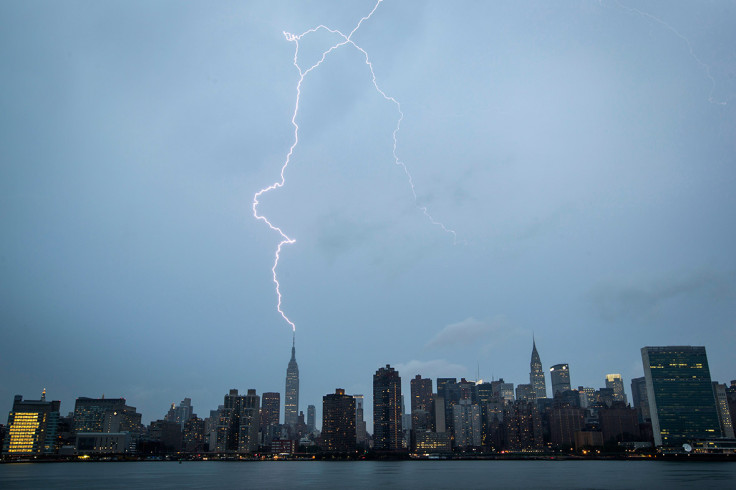First image of thunder taken when scientists create lightning in lab

Scientists have for the first time captured images of sound waves created by artificially triggered lightning to study what happens during a thunder.
Researchers from Southwest Research Institute captured a map of the boisterous bang radiating which could reveal the energies involved in lightning. They presented their findings to a meeting of the American Geophysical Union.
Scientists have a basic understanding of thunder's origins, but lack a detailed picture of the physics behind.
The sonic shock waves are generated when electric current in the form of lightning travels from negatively charged clouds to the ground below. The intense heat expands the air causing shock waves that we recognise as thunder.
Heliophysicist Maher Dayeh of the Southwest Research Institute in San Antonio and colleagues created their own lightning in the lab by firing a long, Kevlar-coated copper wire into an electrically charged cloud using a small rocket.
The resulting lightning followed the conductive wire to the ground. Using 15 sensitive microphones laid out 95 metres from the strike zone, Dayeh said he and his colleagues precisely recorded the incoming sound waves.
By recording the sound waves from different elevations the scientists could create an acoustic map of the lightning strike with detail.
The initial constructed images looked merely like a colourful piece of modern art, Dayeh said.
But on separating the different sound frequency bands, the images cleared up at higher frequencies to reveal a distinct signature of thunder.
The sound was seen to vary from sharp, cracking sound when experienced nearby to long-lasting rumbling when heard from afar.
The loudness of thunder depended on the peak electric current flowing through the lightning, the researchers found.
The scientists believe by measuring thunder, they could in future measure the energy powering a lightning strike.
Power of a bolt
Lightning strikes the Earth more than four million times every day, or dozens of times every second. Scientists have pondered on ways to capture the 5 billion joules contained on an average in a lightning bolt.
But the very brief discharge time of the order of the 100 millionths of a second and the heat generated in the process have defeated any attempts.
Also, much of the energy contained in a lightning bolt disperses as it travels down to Earth, so any heat-protected tower would only capture a small fraction of the billion joules.
© Copyright IBTimes 2025. All rights reserved.





















